Lucinda Chua: "In my production, I'm just trying to carve out a space where I feel like I belong"
On her self-produced debut album for 4AD, Lucinda Chua shifts the focus from the tools to the process. We find out more about how it was made

The title of Lucinda Chua’s debut album, YIAN, translates to ‘swallow’ in Mandarin. Not only a reference to Chua’s Chinese name, Siew Yian, the title also signifies the migratory bird that flies vast distances each year, venturing thousands of miles in the search for survival.
The restless spirit of that itinerant songbird became a symbolic vessel for Chua’s divided sense of belonging, as she navigated the space between the three cultures - English, Malaysian and Chinese - that make up her heritage, using the album’s conception as a means of self-discovery.
A reflective collection of ten vividly confessional songs, YIAN was recorded, produced and engineered almost entirely by Chua in partnership with a handful of close collaborators. A gifted cellist, she records, layers and processes her instrument to create sumptuous sonic atmospheres that form a quivering counterpoint to plaintive Rhodes chords and delicate vocals. Citing influences as diverse as Talk Talk, Maurice Ravel and Stars of the Lid, Chua points to a wide-ranging creative vision that’s as migratory as her namesake.
Chua’s approach to production shifts the focus away from the tools and towards the creative process, and the intention behind it: more than anything, it’s about creating an emotional space where imagination can flourish and ideas can be nurtured. “In my production, I'm just trying to carve out a space where I feel like I belong,” she tells us. We caught up with Chua ahead of the release of her debut album to find out more about how YIAN was made.
Can you tell us about your journey into music, starting at the beginning?
“I started piano at three. Before I understood what music was, I was already making music. There's not really a time in my life that doesn’t have any memories of having some kind of musical practice.”
When did the cello come into play?
Want all the hottest music and gear news, reviews, deals, features and more, direct to your inbox? Sign up here.
“The cello I wanted to play from the age of five or six. I saw these buskers playing in Covent Garden, a string quartet, and I just fell in love with the cello. But my parents didn’t want to buy me a cello, and then for me to quit, or to pay for lessons, because it's quite expensive. So they made me wait until my 10th birthday. The deal was if I kept up piano lessons, then I could take up a second instrument when I turned 10.”
How did this progress towards writing your own songs?
“I was in bands from quite a young age, probably like 15 or 16. Initially, I started doing session work playing cello and bands in my local area in Milton Keynes. But also, growing up in Milton Keynes, there wasn't the same rich cultural offering that there is in London, in terms of diversity or in terms of being on the touring map for bands.
“But one thing that was good about growing up in Milton Keynes, there was a deep countercultural scene of people putting on their own gigs and playing in DIY bands. If you couldn't see the band that you wanted to see, because they weren't coming to your hometown, you kind of just joined a band and played that music so you could perform it to your friends.”
Do you think it’s a scene that might have been a bit more close-knit compared to somewhere like London?
“I think it was close-knit through necessity, because it was about all the weird kids coming together and feeling less weird.”

At what point did electronics and production become a part of your musical process?
“Probably not until I went to university. I would say part of that was maybe because laptops weren't really a thing. When I was a teenager, I guess I grew up in a pre-digital time. So when it came to recording, the only way you could have that was if you went into a studio, which obviously I couldn't afford to do as a teenager.
“When I went to university, I actually went to study photography, but I took an elective in alternative music production. We did a lot of learning how to solder contact mics and tape splicing and capturing sounds on Minidisc, and I think it was that elective that made me realise that I could not only write and perform music or play instruments, but that I could preserve those performances.”
You’ve said that the new record is centred on an exploration of your identity, heritage, and history. Could you tell us a little more about that background?
“So the album is called YIAN, which is part of my Chinese name. Yian means swallow in Mandarin. It draws inspiration from the swallow, the songbird that migrates between two places. I resonated with that on a personal level, not just because it’s my name, but also through growing up feeling connected to both Eastern and Western culture.”
Could you run us through one or two musical influences behind the direction of the new record?
“When I started thinking about writing an album, two records that really influenced me were the last two Talk Talk records, Laughing Stock and Spirit of Eden. I really think of them as being proper albums, something that you want to listen to the whole way through. It’s the way that they're sequenced to be this seamless journey, and how production-wise there are so many different elements and spaces that suck you in as a listener. Kind of like watching a film.
“That was a very big influence on me. And then, I grew up listening to a lot of soul music. At home, my dad would play Otis Redding and Nina Simone. Those were the voices that I grew up with, and I really related to the emotion and vulnerability that they convey in their voices. That's something that has been with me from a very young age and has always resonated.“
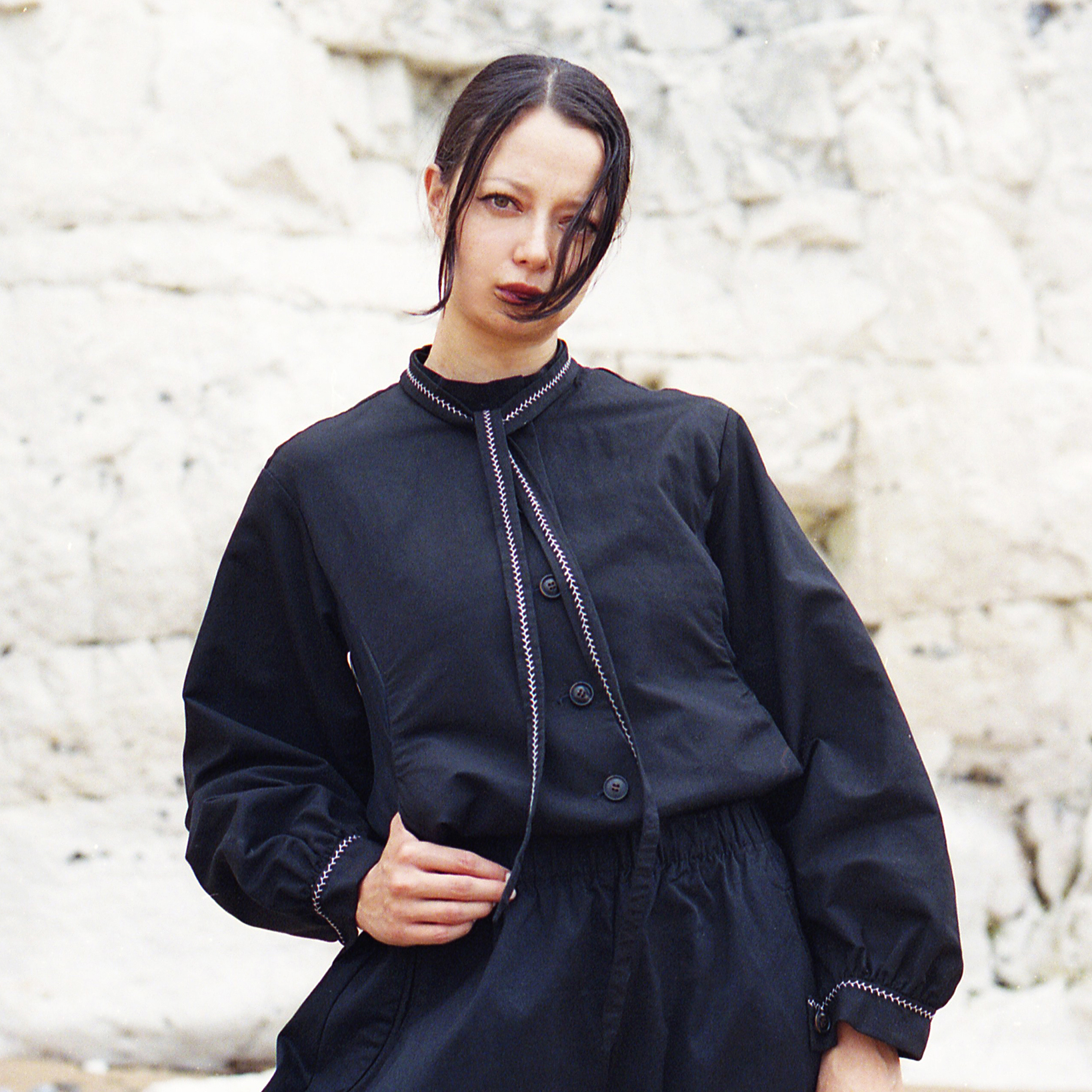
Did you have a clear idea of what YIAN would sound like going into the production process or was this something you discovered along the way?
“It’s been an evolution of my journey as a producer in general. There's definitely a connection with Antidotes, the last record that I put out, but it's been nice to be able to have a framework and have the time to explore my voice, not just as a producer, but also as an engineer.
“Something that was different on this record was having studio time and having access to the studio, where I was just given the keys, and I could go in by myself. I could set the studio up however I wanted. That really helped me develop confidence and experiment with capturing sounds at source, rather than just production being something that I did afterwards.
“Towards the end of the process of making the record, I invited some friends into the studio to add parts and flesh out the sound. That was a real breakthrough moment where I was like: wow, I'm really an engineer. You know, I've got my friends in the vocal booth, and I'm talking to them on the talkback mic.
It’s about creating a space that centres on humanity and feels like a safe nurturing space for people to be able to let go
“I’ve been thinking as well that engineering and production can be an emotional space that you create for performers to feel at ease in order to be able to express. Of course, it's technical, because you're capturing and preserving a moment. But I think it’s about creating a space that centres on humanity and feels like a safe nurturing space for people to be able to let go.
“Especially with vocals, it can be a vulnerable space for you to go in and add something to someone else's track. I definitely know from doing sessions with other artists playing the cello, you can tell when the vibe is good, and you can tell when the vibe is a bit uncomfortable. So having been on the other side a lot, it was really important for me that it wasn't just about that output.
“It was about the whole holistic journey of what it felt like entering the building, chatting with people, so that it becomes an experience and something that you are committing time to in your life, and sharing. Capturing the sound was just one element of that. But all of the parts of the journey were equally as important, if not more than the takeaway.”
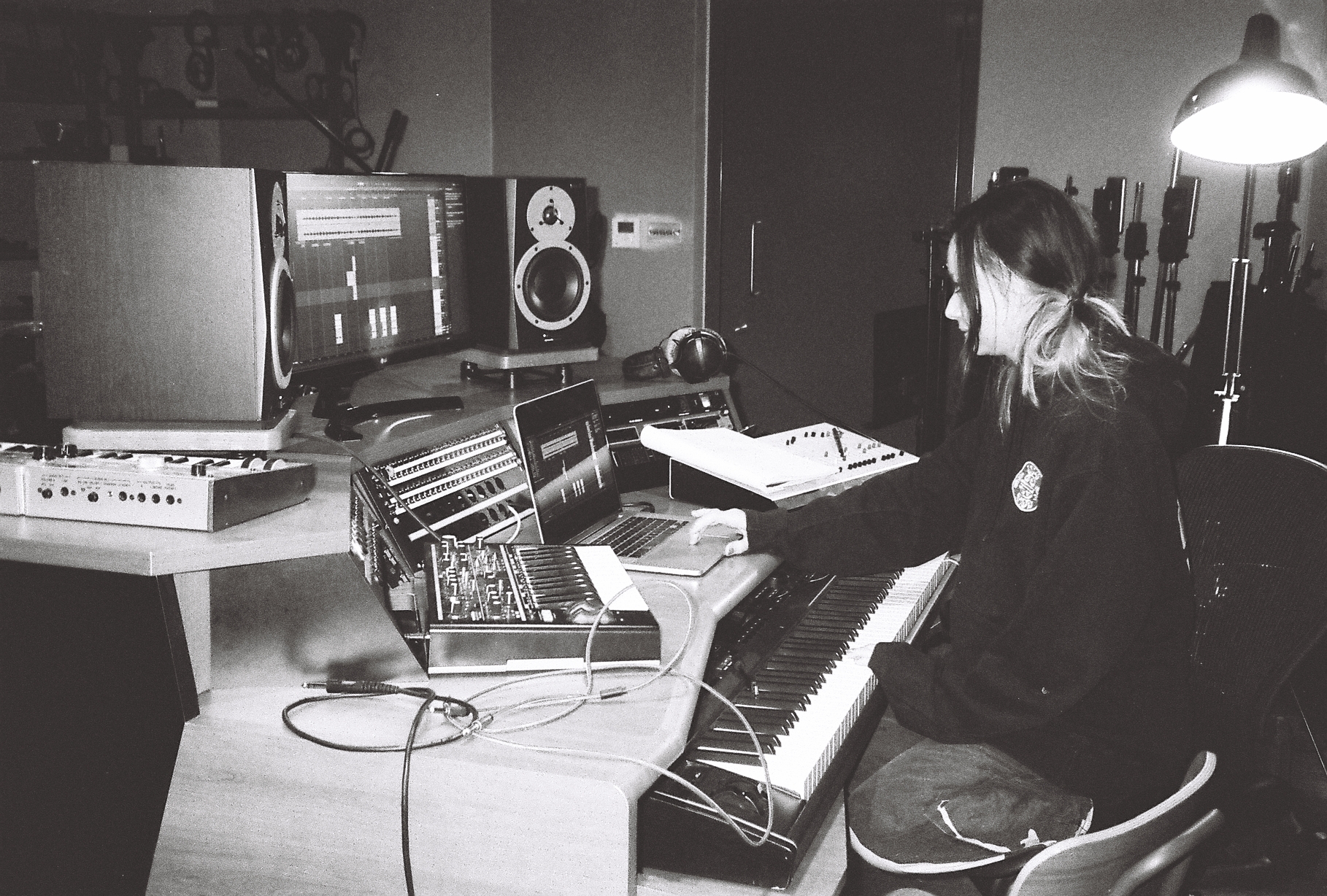
That’s definitely an underacknowledged aspect of the producer's role, the ability to create the right atmosphere and vibe for the people performing.
“I think that it's a conversation. It should be a dialogue between the producer and the performer. It should be something that you collaborate on together to create the right environment so that you can express whatever it is that needs to come out.”
Where was the album recorded?
“It was a bunch of studios, and some of it I recorded at home. I had a little studio share in Camberwell. Some of it I recorded at Spitfire Studios, and a lot of it I recorded at 4AD’s studio.”
Could you pick out one or two pieces of equipment that were fundamental to the sound of the new album?
“For this record, I used a lot of tremolo. Part of that was inspired by some other music that I grew up listening to in the late ‘90s, early 2000s. But also from the Orlando soundtrack, by David Motion and Sally Potter who directed the film. There's a lot of tremolo in that soundtrack, and for me, there's something very sensual and emotional about tremolo, especially when it's used subtly.
“That was a key instrument in my sound. Adding tremolos to the cello, adding really subtle tremolos to the Rhodes. Sometimes that would be through a tremolo pedal that I would run things through. Sometimes it would be reamping sounds through a Fender amp that had tremolo on it, and sometimes it would be adding tremolo in Ableton at the end. Sometimes it would be a combination of all three.
There's something very sensual and emotional about tremolo, especially when it's used subtly
“When I work as a producer, I do a lot of reamping and reworking of sounds. Then in the edit, it's very much about automating between those different choices. I do the same with reverbs: rather than just sticking to one I like to be able to dip into different sound worlds and different physical spaces. Sometimes that's a seamless transition from a really intimate sound into a really expansive sound, and sometimes it's a very hard cut.
“I was working with quite a limited instrument palette - primarily some kind of keys, which would be my rhythm section, the voice which would be the narration, and then the cello which would often add the production or the scenery. I've got my structure, my story and then I've got my scenery.”
How did you record the strings, are these layered cello or did you work with an ensemble?
“It's all me, apart from the second track, "Meditations On A Place", which was actually recorded in Budapest with an orchestra. A friend of mine, Adam Wiltzie, had some spare time with an orchestra - as one does. I'd written out this piece that originally I'd recorded all myself by multi-layering my cello, but then I wrote out the parts and sheet music for the orchestra, and he captured that.”
Adam Wiltzie is from Stars of the Lid, right?
“Yeah. I actually toured in Stars of the Lid, in 2007 or 2008. It was my first tour, I joined them round Europe on a month-long tour playing the cello.”
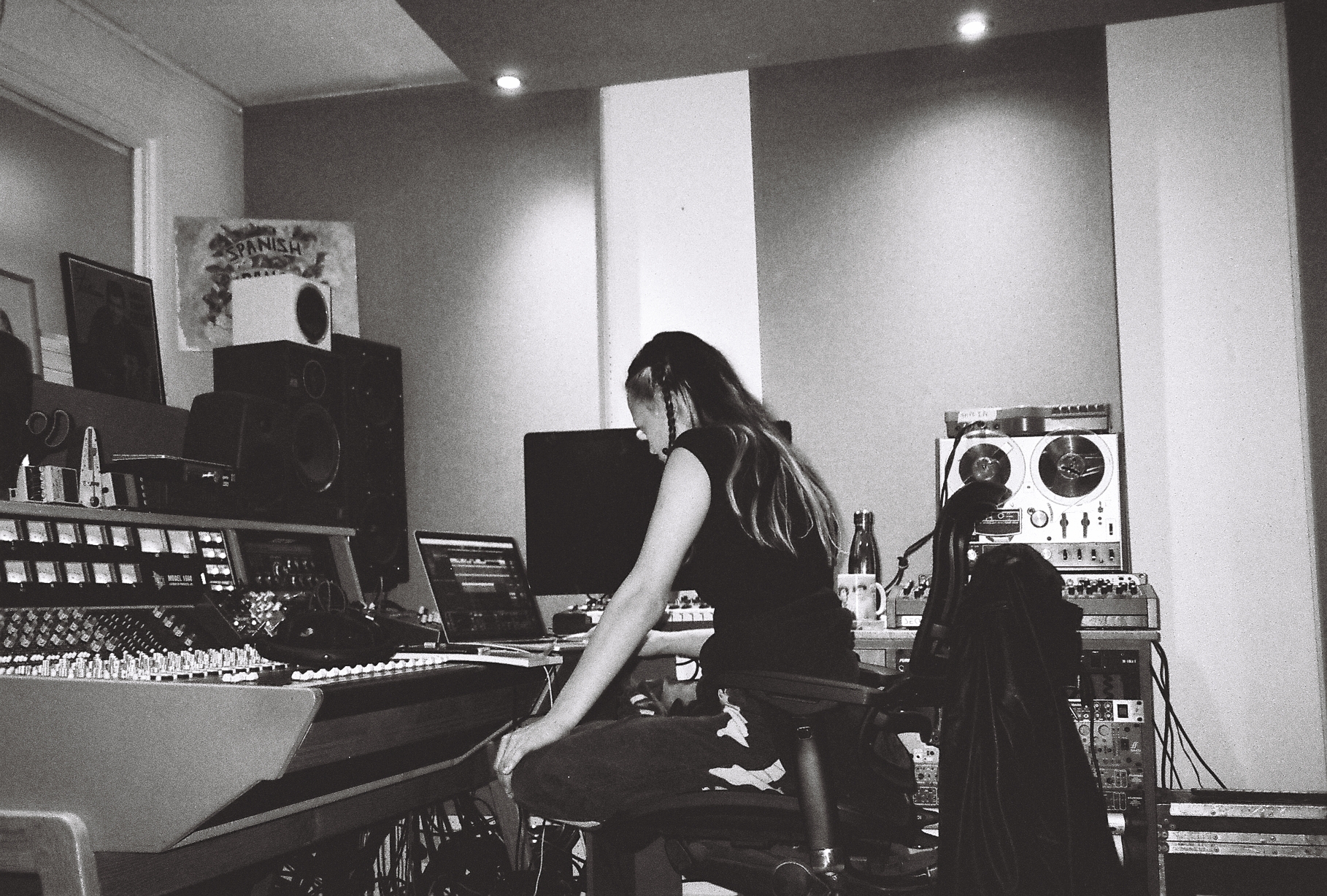
How much of the string parts are processed? What plugins and pedals are your go-to for that?
“It's really a mix. If I were to be able to show you inside the Ableton session, a lot of the time, I'm creating multiple ensembles of me. Sometimes there’ll be a string ensemble that will be labelled as ‘crying strings’ or something, and it will be quite a dry sound, and it will be me playing quite ponticello so it sounds a bit frosty and up-in-the-nose, in the higher frequencies. And I'll leave that quite raw and ugly-sounding.
There’s multiple ensembles or orchestras of myself that I'll be making, and then really it's about how I blend between them
“But then I'll have my atmos strings, which will be the cello that I'll run through pedals and then add extra reverbs on top of that. And then there'll be warm ensemble strings, which I will mic up to sound more like a real quartet playing in a room. So there’s multiple ensembles or orchestras of myself that I'll be making, and then really it's about how I blend between the macro strings and the micro strings and the in-between strings, and sometimes they'll all be playing at the same time.
“A lot of it comes from thinking about things in a filmic way, or thinking about them with a photographer's brain. It's like, what is the wide shot and what is the close up? What are the details that you want to illuminate? Like, what do you want to fog out into the distance so that you feel the atmosphere of it, but it's just a blur? I definitely think about things very spatially.”
What is it about the Rhodes that you’re drawn to?
“Growing up with soul music, it feels familiar to me. I like the way it sits against my voice. I think it’s the softer tone of it. Definitely if I am playing on a piano, I prefer a more mellow piano sound rather than a super bright concert piano sound.
“When you're creating a composition, you want to make sure that you're covering frequencies and that nothing is competing with itself. I very much do that in the writing rather than in the mix. Arrangements are really important, and if the cello and the vocal and the keys are all in the same register, it can feel a bit congested. So the Rhodes is a nice counter to my voice.”
Listening through the album, it’s clear that space and atmosphere play an important role. What kind of tools and techniques do you use in that regard?
“I actually just use a lot of the generic reverbs. When it comes to plugins, I'm not a big plugin person. Maybe that's something I can explore more in the future, but for me, it's about thinking selectively about the intention, rather than just throwing a bunch of effects on something.
“I’m very much thinking in each moment, what do I want people to feel? What journey do I want to take them on? How can I make this dynamic? How can I make this impactful without adding in more? A lot of the time, I'm taking things away.
From a gear point of view, it's more about the process than the actual tools
“So from a gear point of view, it's more about the process than the actual tools. I think it's something that you can do without having to own a lot of kit. Like the reamping that I spoke about before. If there’s a keys part that is consistent throughout the whole song, and it’s a groove or cycle that is repeating again and again, the ears can get quite tired. Sometimes I’ll take that line out and run it through an amp, and then I'll add an effect to that. Whether it's reverb or tremolo, or maybe just the amp sound that’s warmer and slightly more distorted. And then I'll have the raw part and then the reamped part.
“So if there are certain moments where I want to push things a little bit somewhere else, I'll automate in the reamped part. That's one way that from a production point of view, you can keep the ear interested so that you don't get fatigued in listening to something.”
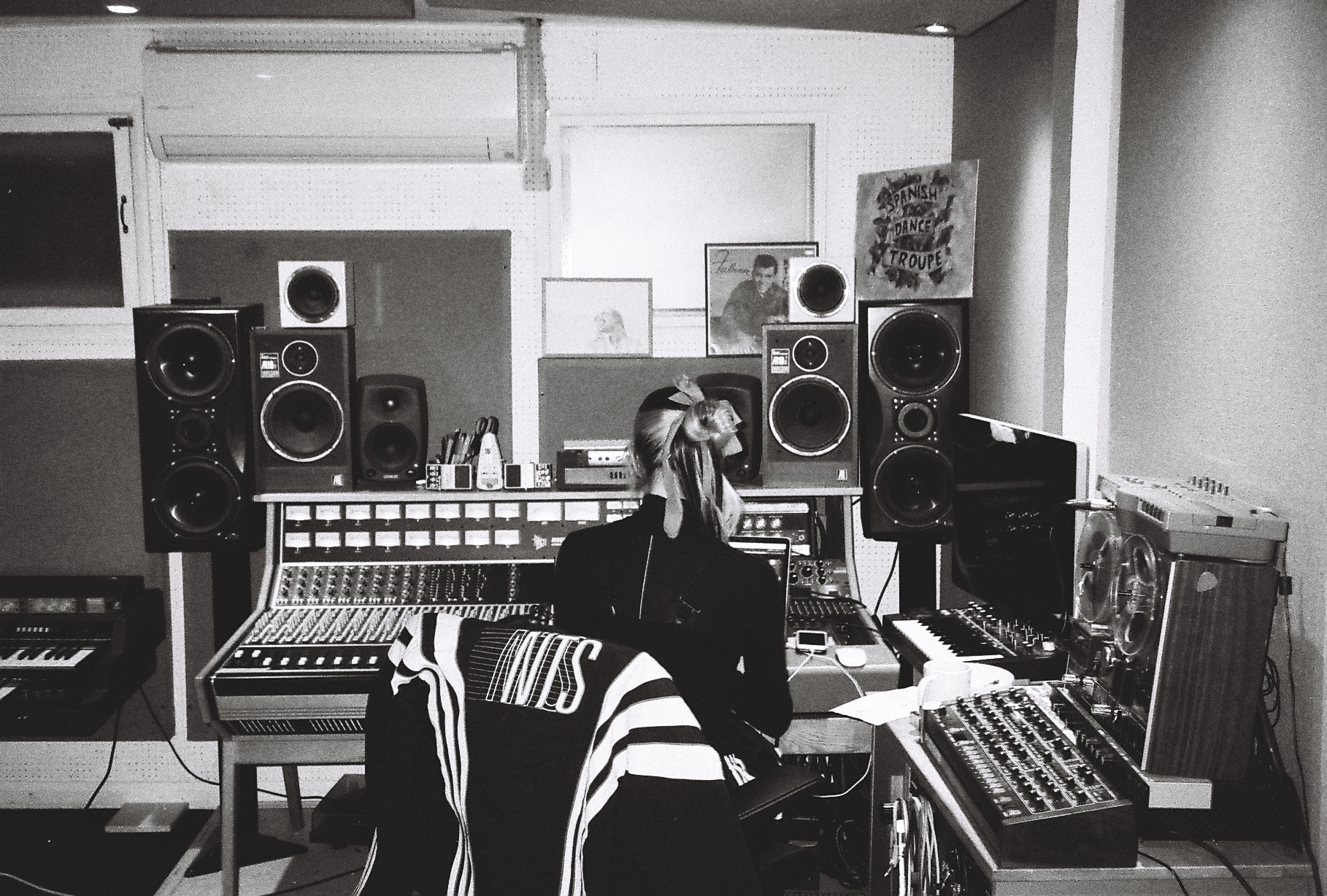
Something else that contributes to that atmospheric feeling is the fact the majority of your songs don’t feature any drums or percussion. What led you to make that choice?
“That was my philosophy for the album - the one rule was no drums. Eight of the ten tracks I produced myself, but "Meditations On A Place" was produced by Adam Wiltizie, and "You", I co-produced with my friends BON. We were in the studio, and we had almost finished the track. We worked on that track over a whole bunch of sessions, and it really slowly and organically evolved.
That was my philosophy for the album - the one rule was no drums
“But the last element - we were sitting around this snare drum, thinking about how we could brush it to make an interesting texture. We must have spent about half an hour at the end of the session trying all these different ways that we could capture this drum sound, but in a way that didn’t sound like a drum. And in the end, I was just like… guys, this isn’t happening. No drums - the rule is there for a reason. So we sacked that off, but it was quite funny. I’ve got lots of videos on my phone of us all huddled around this drum being very serious.
“I think because the piano is often so rhythmic, the piano becomes the drums. Or even the vocal hooks that repeat the rhythm of the voice, it's like I'm playing my voice as a drum. Even if it's just like two notes that I'm singing, the rhythm of that repeating and coming back gives the sense of there being a drum, it's like something is driving forwards. In terms of whether I'll put drums on stuff in the future, I don't know. Maybe. It could be fun to do something more rhythmic.
“Coming from being a string player, and growing up playing a lot of chamber music, there isn't a click. The click is in your body. So much of the beauty of chamber music is the push and the pull and the breath that you as an ensemble are creating. So lot of the record isn't on click. But maybe it's an area I can explore in the future.“
The way your vocals are recorded and mixed really stood out to me, it’s a very close-miced, intimate sound. Could you shed any light on how you record and process vocals?
“With the vocals and how I record them, it's more about creating a sympathetic environment for my voice. I don't have a big diva voice. I'm not a belter. So it’s about creating an environment that felt intimate for me so that I could feel comfortable, so I wasn't having to strain myself or push myself.
I'm not a belter - it's about creating a sympathetic environment for my voice
“Sometimes, being in the studio, even though I'm in there by myself, I'm often not wanting people to hear what I'm doing. Especially when I'm in the early stages of synthesising what that idea might be or where it might go. It's a really intimate part of the process where you're nurturing this little seedling, and the last thing you want is for someone to bust into the room. And I guess, in a studio environment, even though I was in there by myself, there was this sense of wanting to be quiet so that no-one would hear me.
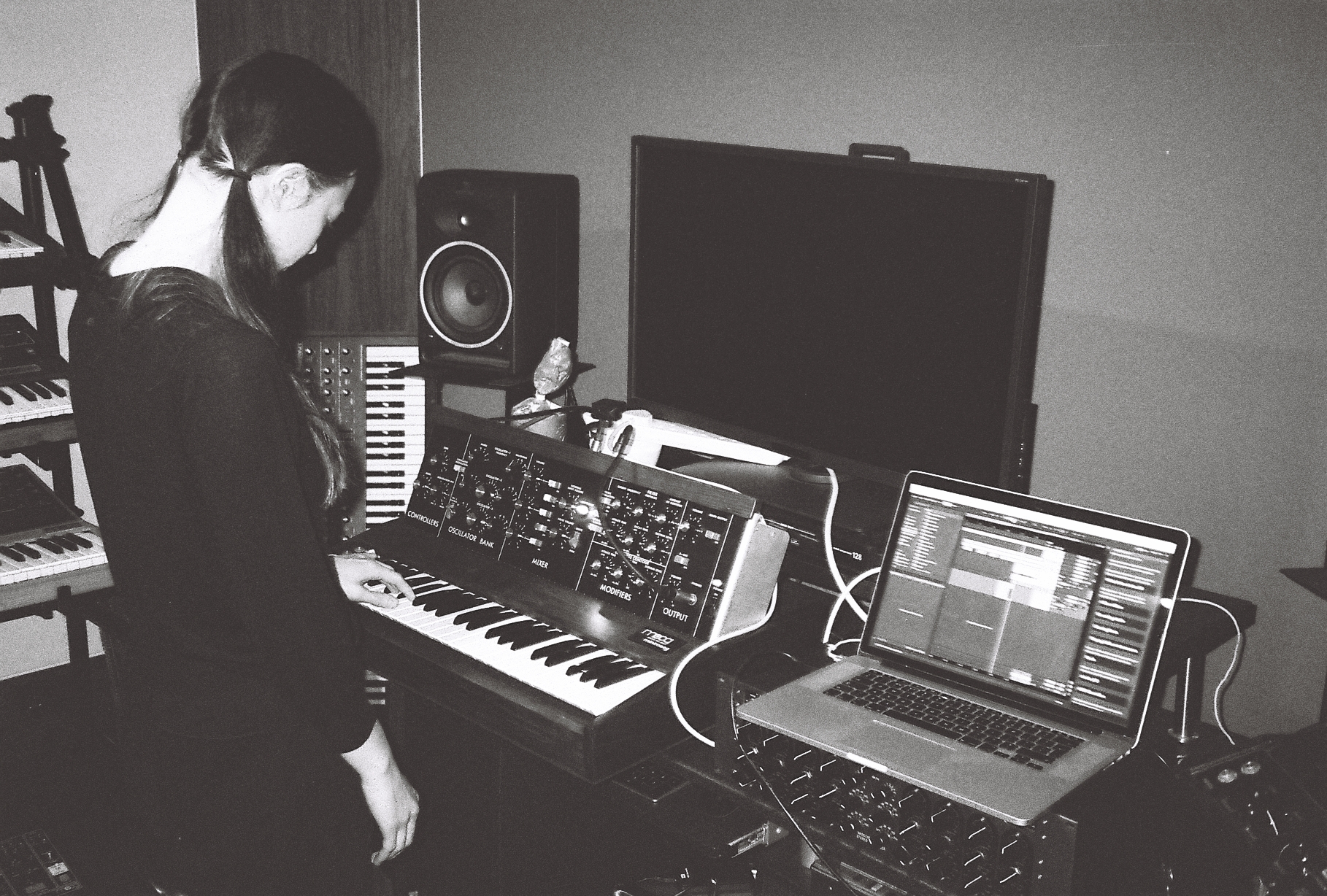
“Maybe part of that came from recording at home at the beginning. I started recording in the lockdowns. There is a real magical quality you can get from recording in a space that is your home, because there's a casualness and openness because you're always there. When you feel something, you can tap into that moment without having to schedule it or book it.
“But then also, there is a respect of sound bleeding both ways - not necessarily wanting to be heard, but also not wanting to piss your neighbours or your housemates off. Because the last thing people want to hear is you doing the same vocal take again and again.”
Did you record the Antidotes EPs at home, or were they in the studio as well?
“It’s a mix. Often it starts off at home at the piano and then grows from there. But I try to always retain part of the demo in the final thing, because I think there is something when you're performing for the first time, and you're surprising yourself at what's coming out. Sometimes that take is really precious, versus the take where you really understand what it is that you're trying to say and you've perfected it. Sometimes the magic of the unknown is really prominent in those early takes.”
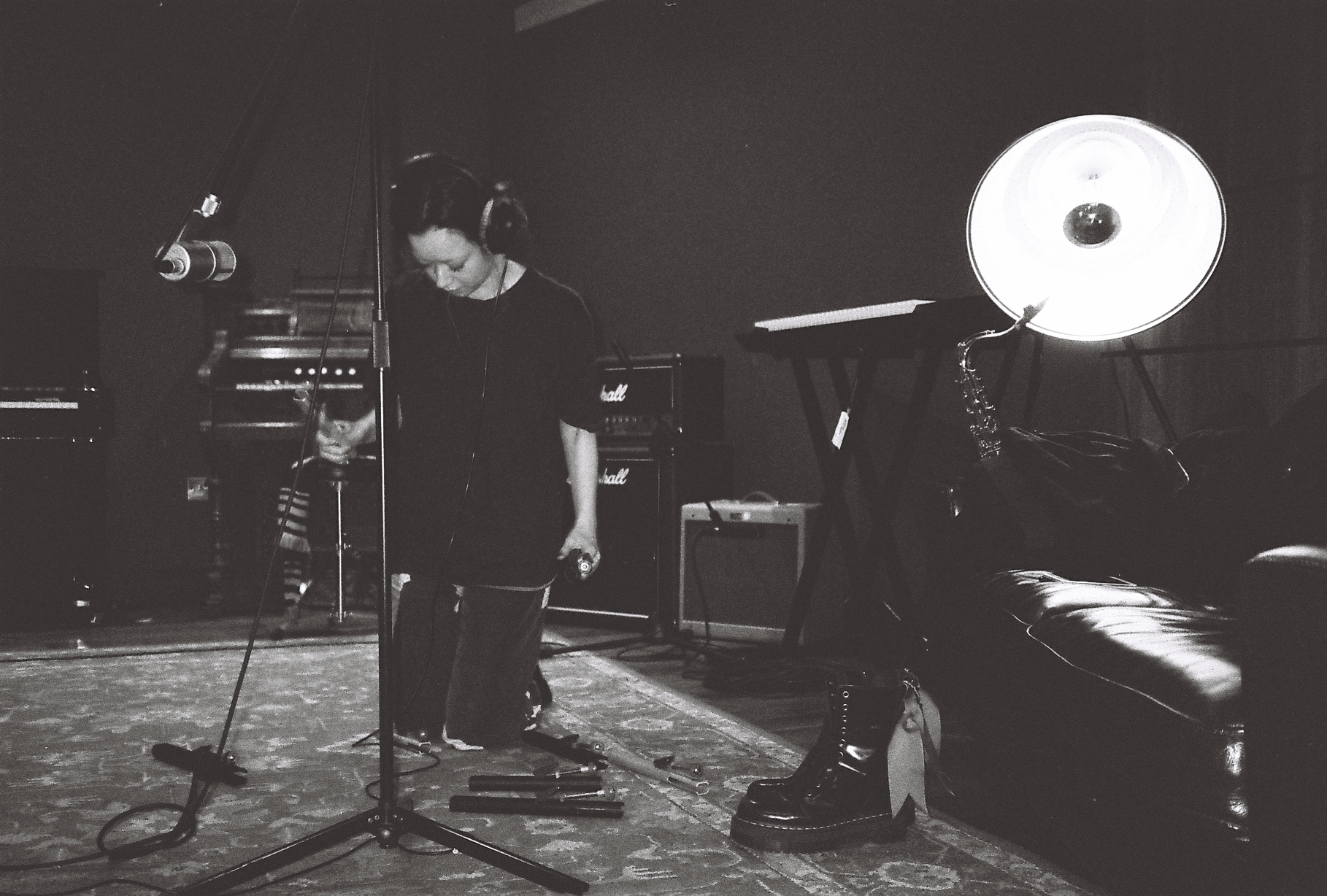
What does your home set-up look like?
“I'm really sad because I've had to give my piano back. But I was basically renting a piano, which is actually really smart, because it means that if you ever need to move house, you don't have that pressure of having to move the piano. I feel like a piano is quite a big responsibility. But I was renting the Yamaha B1 upright, which I loved because you can obviously mic it as an acoustic instrument, but then you can put the silent pedal on and you can get a MIDI out, but you can also listen to it in headphones. That was a real joy.
“That’s something that I started renting after the lockdowns, and then during the lockdowns I just had a weighted keyboard that I would play on. That probably got me through the lockdown: being able to put my headphones on and just crank up loads of reverb on the keyboard and imagine that I was in a really big space, even though I was in my living room.”
The processed vocal sound on “Do You Know You Know” caught my ear especially. How did you produce that?
“From a production point of view, on that song, I feel like I really pushed my sounds a lot more. I recorded those harmonies - I think I know the ones you're talking about, the ones that are stacked together - and then we pitched and time-stretched them, which is something that I quite often do with a cello. But it was interesting to take that process and then apply that to my vocal, but because they're different instruments it comes out differently.
“My favourite sound on that track is the Bontempi fan organ. The one that sounds a bit like an aggressive train. That was really fun, micing that up. That was just a process of EQ, compression, bounce it, then re-EQ, re-compress, bounce it again, until I got this really intense sound that I wanted. And then similarly, re-harmonising and stacking them together.”
Another sound that caught my attention was that distorted part on “Grief Piece” which accompanies the piano. There’s such a contrast there between the two timbres. Could you tell us where that came from?
“That is actually in MIDI. In fact, that's one of the few MIDI sounds that I used on the record. That was just something that was already part of Ableton. But I liked it because it felt like getting an electric shock.
I come from a background of playing classical instruments, but I don't want to make music that reenacts the past
“I wanted to write an instrumental piece, and the piano felt like the right place for that to live, but sometimes I feel like the semiotics of the piano are so ingrained within us in such a classical world. I wanted that piece to push an emotion that’s beyond a classical emotion or an inherited emotion, so I felt like it really needed that jolt to really hit you.”
On the one hand, the album is very warm and organic-sounding, but there’s a lot of electronic touches woven into the mix. Where did you want the sound of the album to sit on that spectrum?
“I'm really interested in the crossover. I come from a background of playing classical instruments, but I don't want to make music that reenacts the past. It's important for me to have authorship over my sound, and for that sound to feel like something that can belong to the future. I try with my music to be quite anti-nostalgia. I don't want to create a sepia photograph that’s looking back on the past and how beautiful everything used to be.
”So in a lot of my production choices, I'm deliberately anti-nostalgia in the way that I cut things, or that way that I don't allow things to resolve, or the way that I take things out or the way that I add in sounds that jar with the more classical nostalgic sounds. That balance is really important for me. I never felt like I fit in, in the classical world - I wasn’t fully accepted. I didn't grow up doing grades or reading sheet music. I learned a lot more by ear and by feel. And so in my production, I'm just trying to carve out a space where I feel like I belong.”

What synths did you use on the album?
“Not so much on this record. The last thing that I added was a vintage Moog from the ‘60s, owned by a friend of mine. He has an amazing synth collection, and very kindly let me use the studio and track whatever I wanted.
“I felt like the piece that was missing from the record was the bass. Because for me, it's the bass frequencies that drive the emotion, they're the cues for where you need to cry. The bass and then also the high frequencies, in between the eyes. In the gut and in between the eyes, those are the emotional release points.
“So I went in, and I tracked bass on a bunch, not all of the songs, but a lot of the songs where I felt like it needed that extra punch, or that extra weight. And I think recording it on a vintage Moog, it just had that living, evolving, textured, organic sound that I wouldn't have been able to get had I just done it in MIDI.”
Your music has a real contrast between very hushed dynamics and these moments of intensity. Does that broad dynamic range make it a challenge to mix?
“I work with a really really amazing mixer who I should give a big shout out to: Nathan Boddy. I also worked with him on Antidotes 2, and he mastered my first EP Antidotes 1.
“What I love about working with Nathan is, he's just really sensitive to the music and to the artist. He understands and respects not to go in and tidy everything up. Finding a mixing partner who can see music the same way you do is so important because it can go in so many different directions. It can end up sounding like a totally different record in the mix.
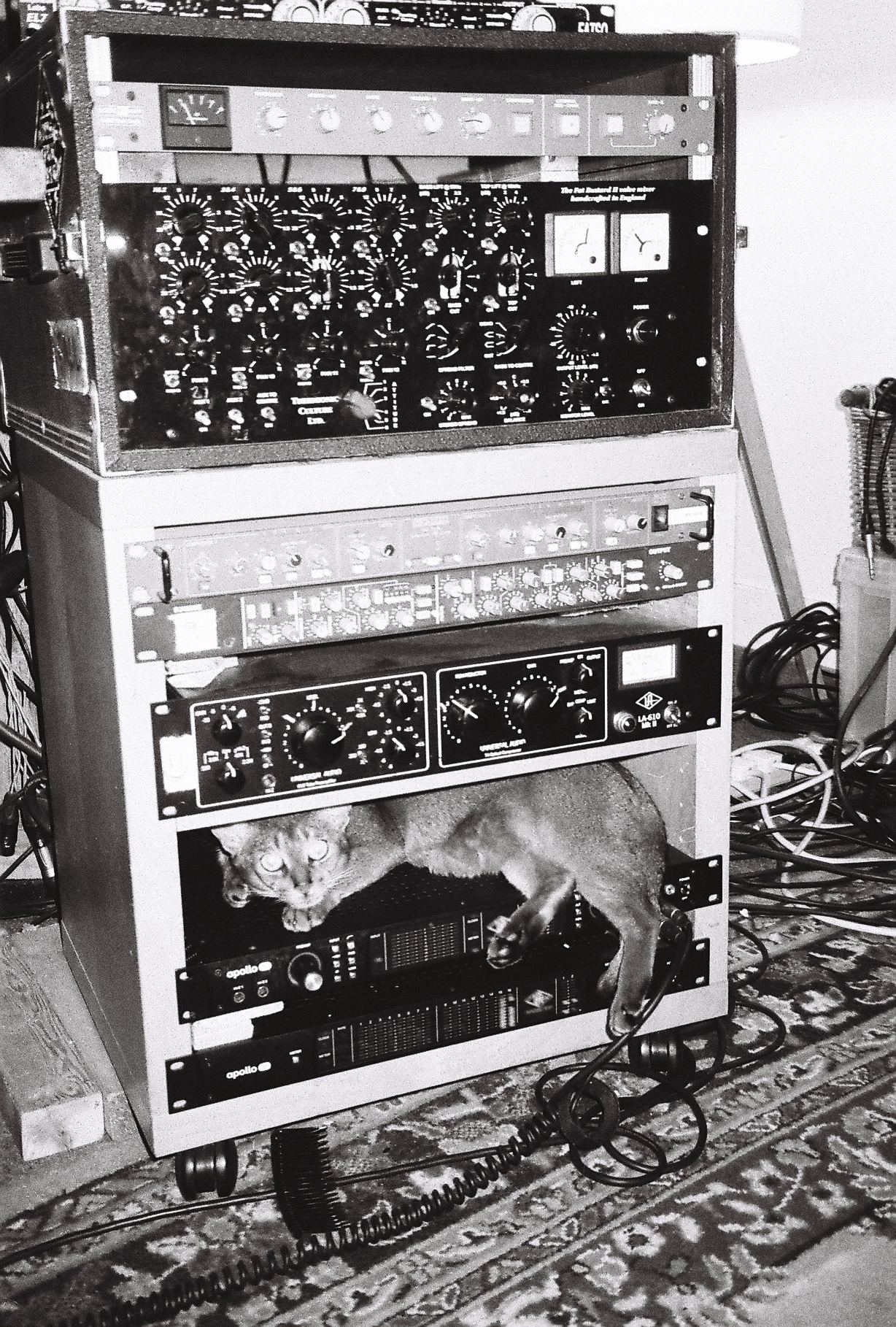
“So when I went to Nathan, I was just like, ‘look, I've worked on this myself, I really love the sound, I just want it to be able to like read as a record and to find a sense of consistency across the whole record, but also for it to be able to read across different ways of listening’.
“So we sat down and we listened to the record end to end. I just appreciated his attention to detail in the subtleties. He doesn’t just go in and push up the high-end to make it sound like a great pop record. There’s so much skill in being able to show restraint and find the nuance.”
You mentioned Ableton before - is that the DAW you’ve always worked with?
“Before Ableton I actually worked a lot in GarageBand. I actually really enjoyed using GarageBand - that was what I started out on, and I appreciated how in the older version it gave you a lot of creative control.
You can have the best kit in the world, but if you don't have something to say, it's not going to help you
“Ableton is something that I switched over to in 2017. Similarly, I found it incredibly intuitive to use, but what I love about Ableton is that you can go in as deep as you want to - as an instrument in itself, you can make great music where you're only using 3% of what it's capable of doing. I love that if you have an idea, there is a way in Ableton that you can realise it. Just sometimes it takes watching a lot of YouTube tutorials to figure it out.”
I think a lot of people don’t realize how powerful Garageband has become.
“It’s great. It's really easy for producers to fetishize software, you know what I mean? But really it comes down to the intention of the producer. It comes down to your ideas, and you can have the best kit in the world, but if you don't have something to say, it's not going to help you.
“That's always the advice that I give to producers who are starting out, especially women who maybe feel like production is gatekept by men or that it is intimidating, or it feels unobtainable. I would just say, you’ve just got to go for it and you figure it out as you do things. It's really your drive to express and create new language that forces you to learn.”
You mentioned in an interview with RA that you were hesitant to call yourself a “producer” at first, but later overcame that barrier. Could you tell us a little more about that journey?
“When I was a teenager, and also in my 20s, in my experience, when I went into studios, the people who had access were men. I think that I just didn't feel qualified because I didn't know all of the gear. But I remember saying to a friend, ‘oh, I'm not really a producer. I'm not really a very technical person’. But I was saying it as I was opening up my pedal board… with all of these effects units that I'd cabled together in my chain. [laughs]
“I think it’s more of a representation thing, in being able to relate to the people who claimed that language. There are so many different ways to be a producer, and I think the moral of the story is you just gotta do it.”
Lucinda Chua’s YIAN is scheduled for release on 24 March via 4AD.



I'm MusicRadar's Tech Editor, working across everything from product news and gear-focused features to artist interviews and tech tutorials. I love electronic music and I'm perpetually fascinated by the tools we use to make it.